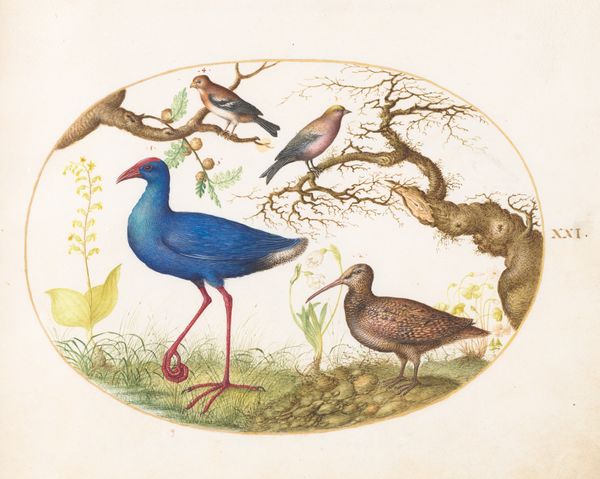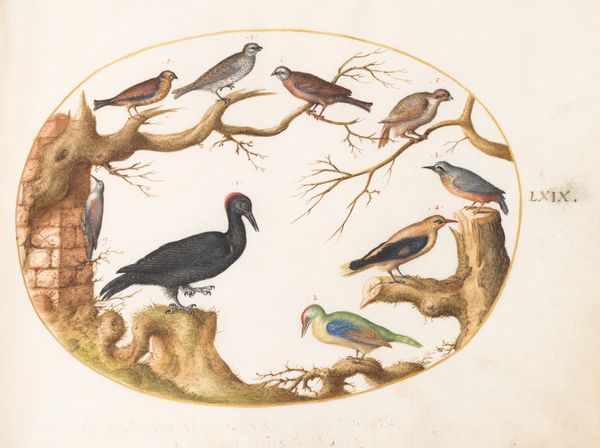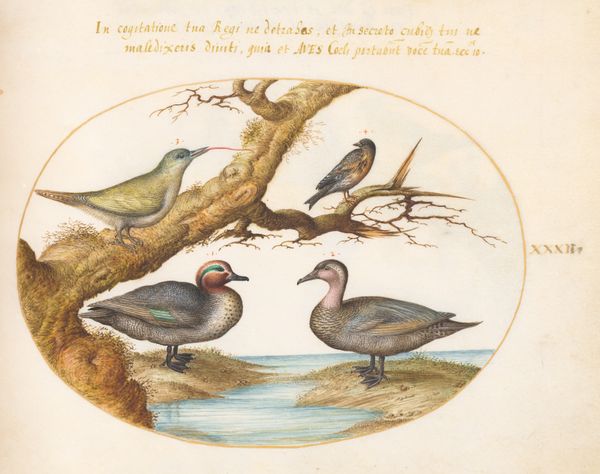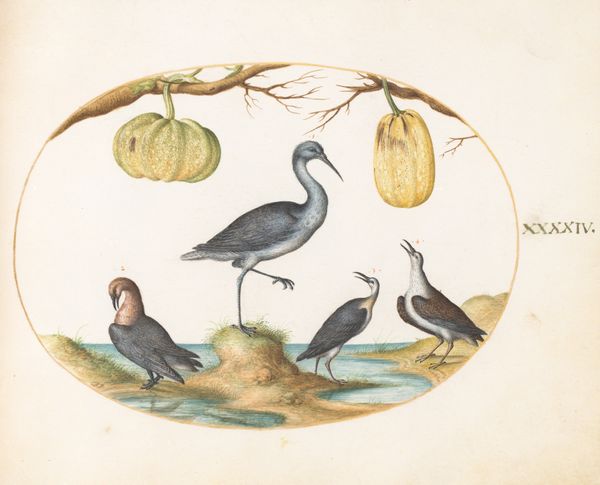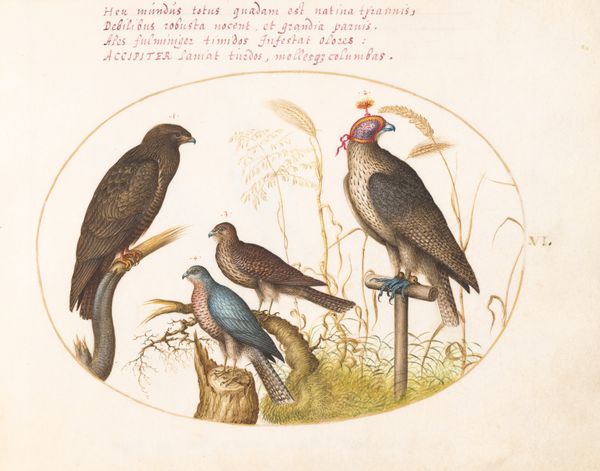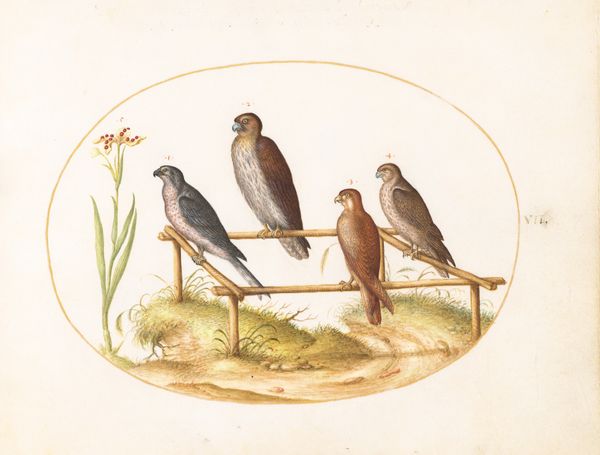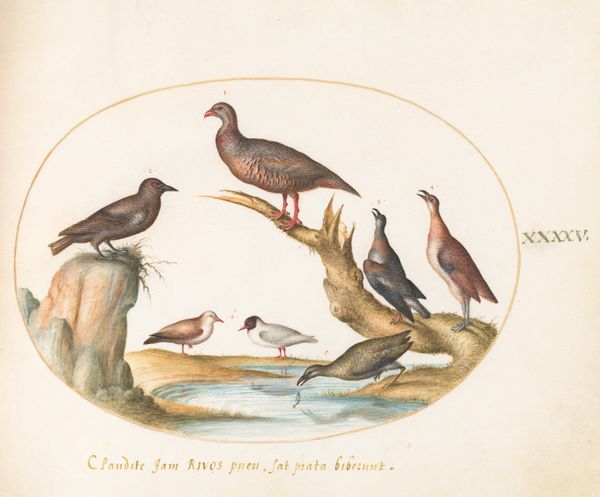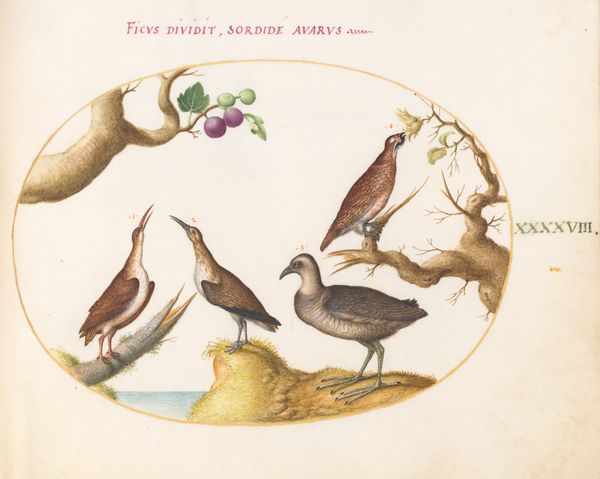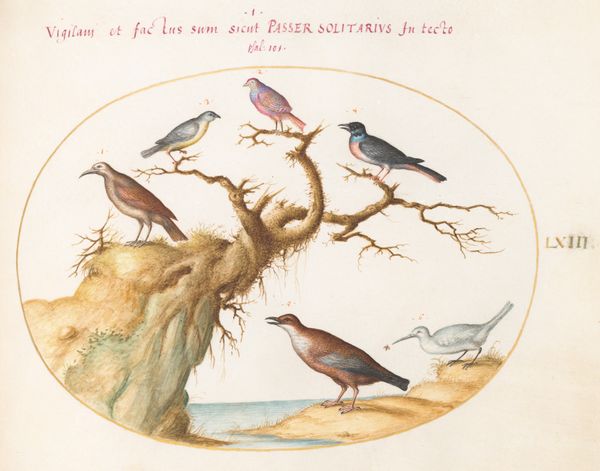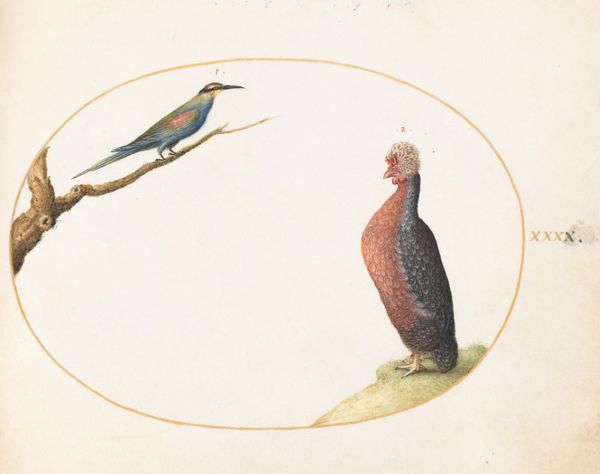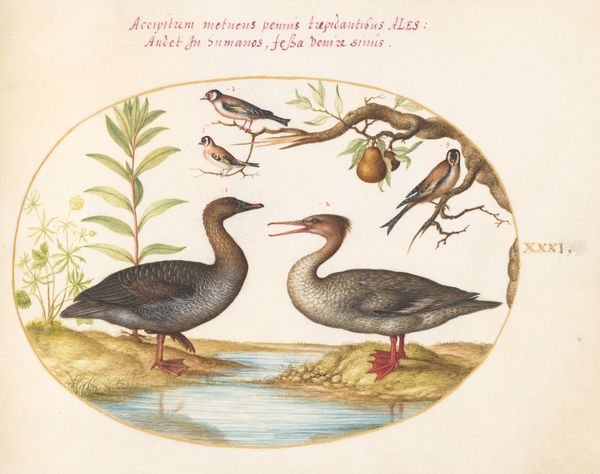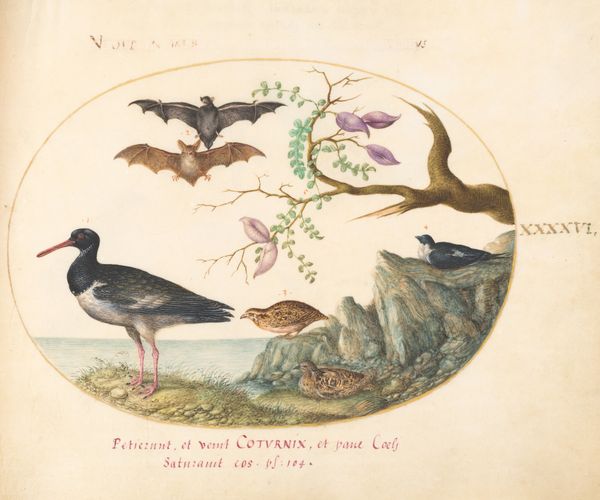
Plate 52: Blue Tit with Three Wading Birds and a Fig Tree c. 1575 - 1580
0:00
0:00
drawing, watercolor
#
drawing
#
water colours
#
figuration
#
11_renaissance
#
watercolor
#
coloured pencil
#
watercolour illustration
#
naturalism
#
miniature
#
watercolor
Dimensions: page size (approximate): 14.3 x 18.4 cm (5 5/8 x 7 1/4 in.)
Copyright: National Gallery of Art: CC0 1.0
Curator: Looking at this delicate watercolor, "Plate 52: Blue Tit with Three Wading Birds and a Fig Tree," created by Joris Hoefnagel around 1575-1580, I'm immediately struck by its dreamlike, almost fantastical quality. What do you think? Editor: It feels like a perfectly captured moment, a glimpse into a tranquil, miniature world, and the composition draws me in – an oval frame filled with an intimate gathering of birds. Curator: Yes, the oval format contributes to that sense of looking into a contained world, a little ecosystem, in a way that resembles early scientific illustration, full of potential symbolic associations with both the birds and flora depicted. Editor: True, scientific renderings weren't divorced from the artistic or the social impulses that shaped them; for example, how do the backgrounds, which suggest marshy shallows, function in this representation? Curator: The landscape here evokes the concept of *locus amoenus*, an idyllic, peaceful place, which lends this drawing a harmonious air and contrasts subtly with other elements such as the small but evident numeric notations. Birds and plants are often allegorical stand-ins: love, plenty, hope, mortality. I can feel echoes of illuminated manuscripts. Editor: Fascinating. Those plants create a real sense of place, certainly, but they also feel like specimens in a scientific collection, which speaks volumes about the societal mindset of observing and classifying nature during the Renaissance, its expansion through natural philosophy, gardens, trade and colonial dynamics. It’s both beautiful and historically charged. Curator: Hoefnagel’s exquisite control of the medium really highlights that collision of interests: he balances the precise observation required for naturalistic depictions with the graceful composition and jewel-like colours found in courtly art. Consider that dazzling blue tit; a relatively simple shape is turned into something so incredibly compelling because of how he has controlled the watercolor’s pigment. Editor: Absolutely. That specific rendering could signal power dynamics through patronage or the commodification of aesthetics through collecting "specimens" represented and abstracted into art, all the while framing how knowledge of nature was socially produced and disseminated during that period. The aesthetics and science aren’t operating independently here. Curator: Yes, it reminds us how early scientific illustration was itself a cultural artifact shaped by aesthetic preferences and prevailing symbolic meanings. It's far more layered than just a "pretty picture" of birds! Editor: Precisely. That combination of the aesthetic and the historical invites a closer look, demanding we acknowledge the intertwined, culturally specific relationships humans forge with nature and how those bonds inform our perceptions.
Comments
No comments
Be the first to comment and join the conversation on the ultimate creative platform.
